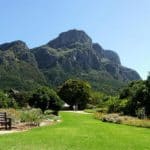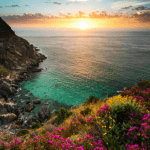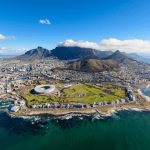The Obamas had a dinner reservation for the night Democrats announced their presidential candidate and the restaurant was looking for a wine that popped but also made a statement.
That night in the private dining room at Chicago’s Blackbird restaurant, Eduard Seitan served them a bottle of Graham Beck Brut NV – the same sparkling wine sipped by Nelson Mandela at his inauguration as South Africa’s first black president.
“(Obama) liked it so much that when they had the election, they called me and asked if they could order six more for their Election Night party,” Seitan said in a telephone interview from the restaurant, where he is co-owner and sommelier.
Graham Beck’s Web site describes the brut as a blend of chardonnay and pinot noir grapes that creates “a rich and creamy complexity, with the fine mousse giving it freshness and finesse.”
South Africans this year are celebrating the 350th anniversary of their wine industry and note proudly that it is generations older than any New World wines from Australia or South America.
The wines are relatively new to the international market, however, because decades of U.N. sanctions against the country’s white supremacist government made it a rare commodity until Mandela won the first democratic elections in 1994.
South African wines make up less than 1 percent of U.S. wine imports, said Etienne Heyns, who does marketing and sales for Graham Beck. But the United States represents a growing market and South Africa’s wines are getting increasing attention there.
“Forgive me if I’m excited, but I can’t help it. I want to tell you straight out that South Africa, of all places, is one of the greatest sources for moderately priced cabernet sauvignon on the planet today,” New York Times wine critic Eric Asimov gushed in a recent column.
The first to plant vines on southern African soil was Dutch explorer and colony leader Jan van Riebeeck, in 1655, three years after he made land at the Cape of Good Hope. The original plan was to use the indigenous wild grapes to prevent scurvy among sailors of the Dutch East India company when they resupplied on their way to the east along the spice route.
Wine-growing today remains centered around the Cape, with vineyards stretching over 800 kilometers (500 miles) and 100,000 hectares (250,000 acres) from the slopes of rugged mountains to open plains and river valleys, most near the Atlantic coast. Old estates boast centuries-old villas adorned with Cape Dutch gables and most offer wine-tasting to visitors.
South Africa is the ninth biggest producer of wines in the world, yet it has one of the lowest consumption rates of any wine-growing country. Experts blame the apartheid era, when few blacks could afford wine.
With a few exceptions, wine estate owners still are almost all white in South Africa. But bigger producers are starting to look at the growing market among middle-class urban blacks, a tiny percentage of the population of some 50 million.
September’s Soweto Wine Festival drew 4,500 people who tasted 850 wines in the black township outside Johannesburg better known for its protests and police raids during apartheid Wines of South Africa, which represents 360 exporters, says 2008 was a record year with more than 400 million liters (840 million pints) exported, an increase of 32 percent over the previous year despite tough global trading conditions that saw declines in the exports of competitors.
Nearly 20 percent of Graham Beck’s total production is sold in the United States, some 84,000 bottles each year.
“North America is the one area of world where consumers are still interested in paying a little more for a more interesting wine,” said Heyns. The United States also is about the only place in the world where there is substantial growth in wine consumption.
“The entire South African wine industry is looking at the U.S. as its future hope for commercial success,” he said. “But the difficulty is this attention comes at the worst time, with the recession.”
Sapa
**********
GETTING THERE: The area around Cape Town is South Africa’s wine capital. The historic towns of Stellenbosch and Franschoek, both worth a visit in their own right, are home to many fine wine estates which are all clearly marked and often on designated wine routes. Other wine farms are situated around Paarl and Robertson.
THINGS TO DO: Most vineyards offer wine tastings and usually charge a nominal fee to cover costs so the visitor doesn’t feel obliged to buy any wine. They usually are accompanied by excellent, reasonably priced restaurants that are very popular with South Africans at weekends. Most are relaxed, child-friendly places and often have picnic spots and play areas.
Many tour operators have wineland tours, but if you have your own transport it’s easy enough to visit on your own. Please contact us for more information.





